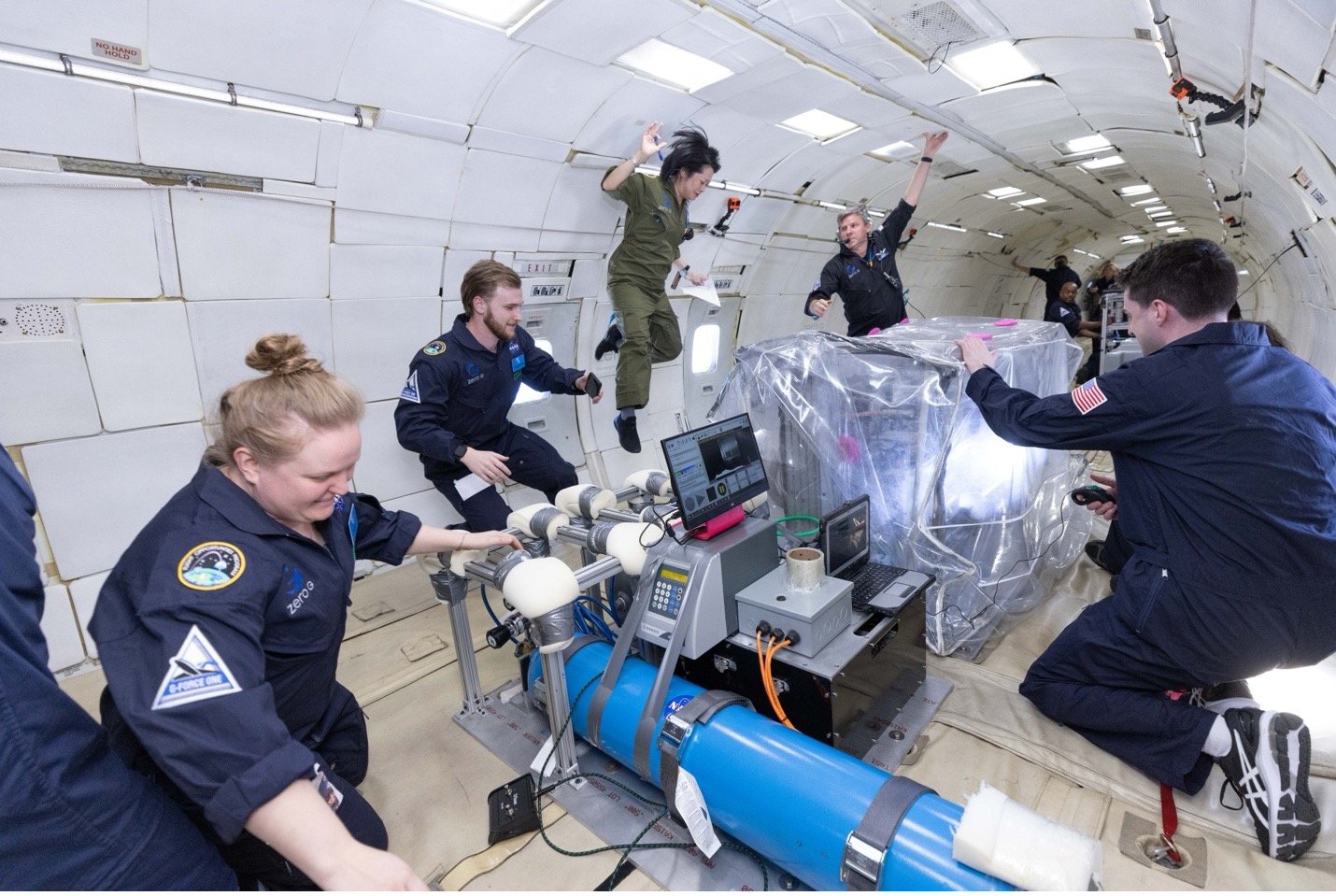Credits:
Zero-G
Teams of NASA researchers put their next-generation technologies to the microgravity test in a series of parabolic flights that aim to advance innovations supporting the agency’s space exploration goals.
These parabolic flights provide a gateway to weightlessness, allowing research teams to interact with their hardware in reduced gravity conditions for intervals of approximately 22 seconds. The flights, which ran from February to April, took place aboard Zero Gravity Corporation’s G-FORCE ONE aircraft and helped to advance several promising space technologies.
Under the Fundamental Regolith Properties, Handling, and Water Capture (FLEET) project, researchers tested an ultrasonic blade technology in a regolith simulant at lunar and Martian gravities. On Earth, vibratory tools reduce the forces between the tool and the soil, which also lowers the reaction forces experienced by the system. Such reductions indicate the potential for mass savings for tool systems used in space.
This flight test aims to establish the magnitude of force reduction achieved by an ultrasonic tool on the Moon and Mars. Regolith interaction, including excavation, will be important to NASA’s resources to support long-duration lunar and Martian missions.

